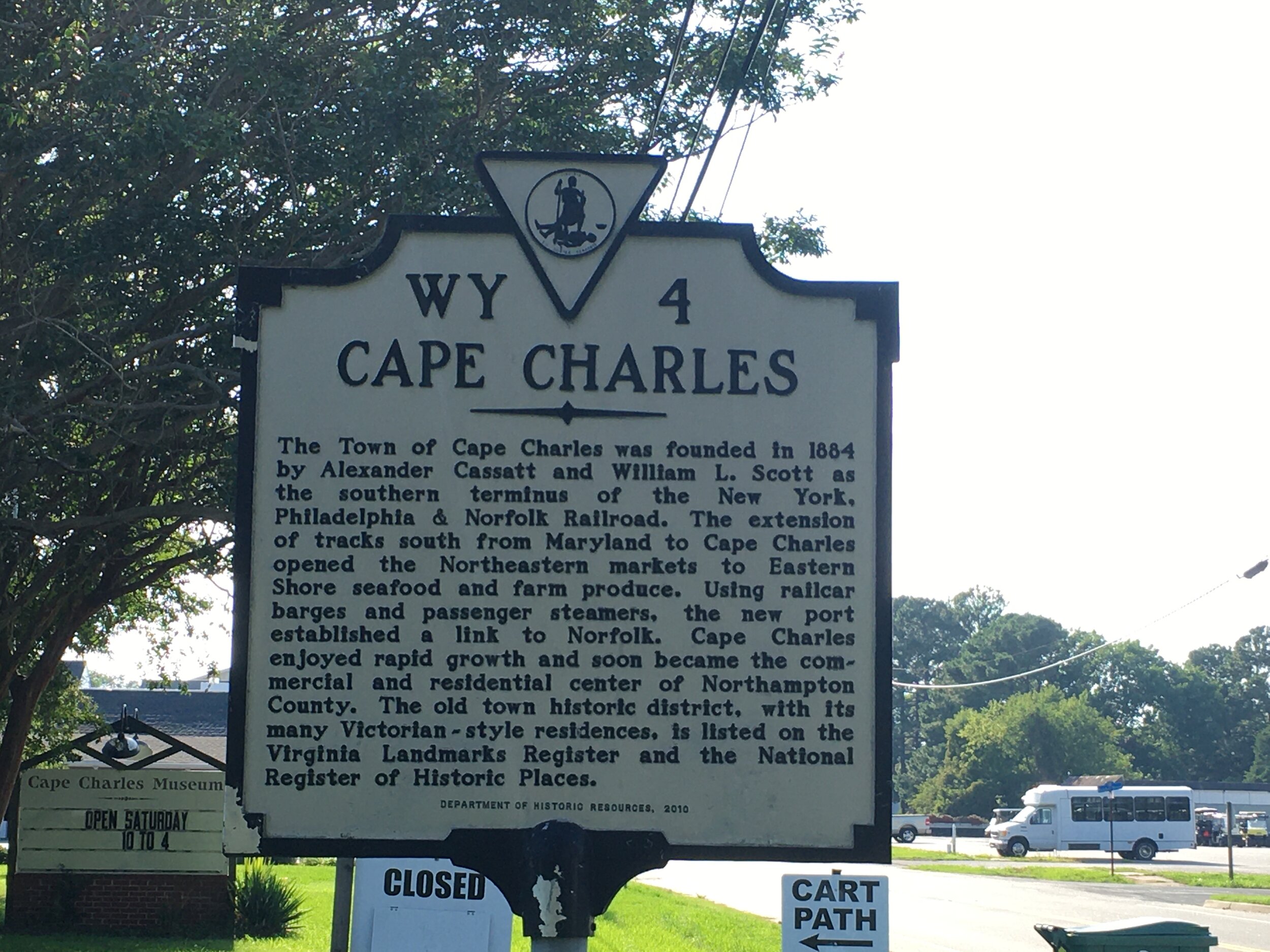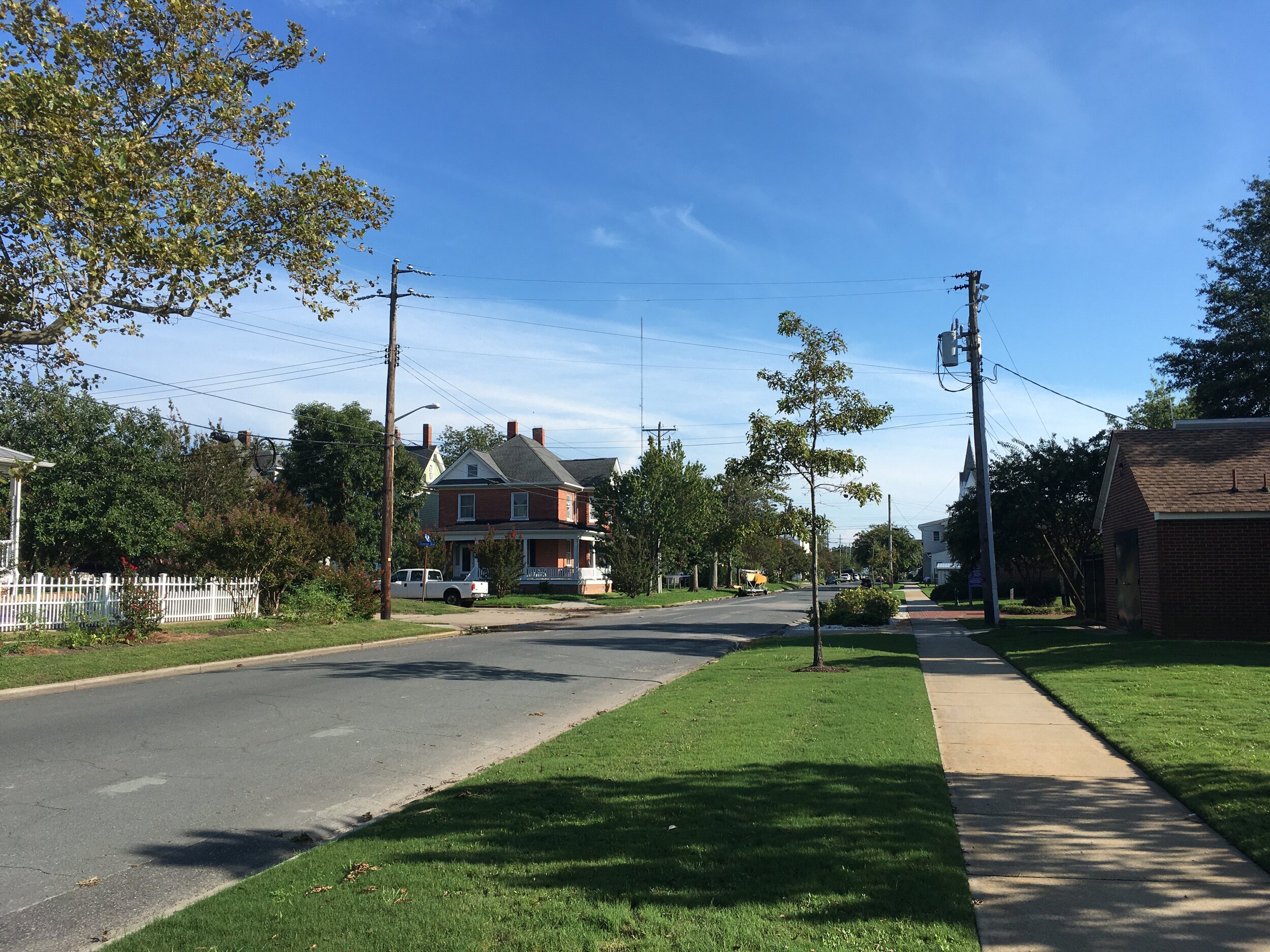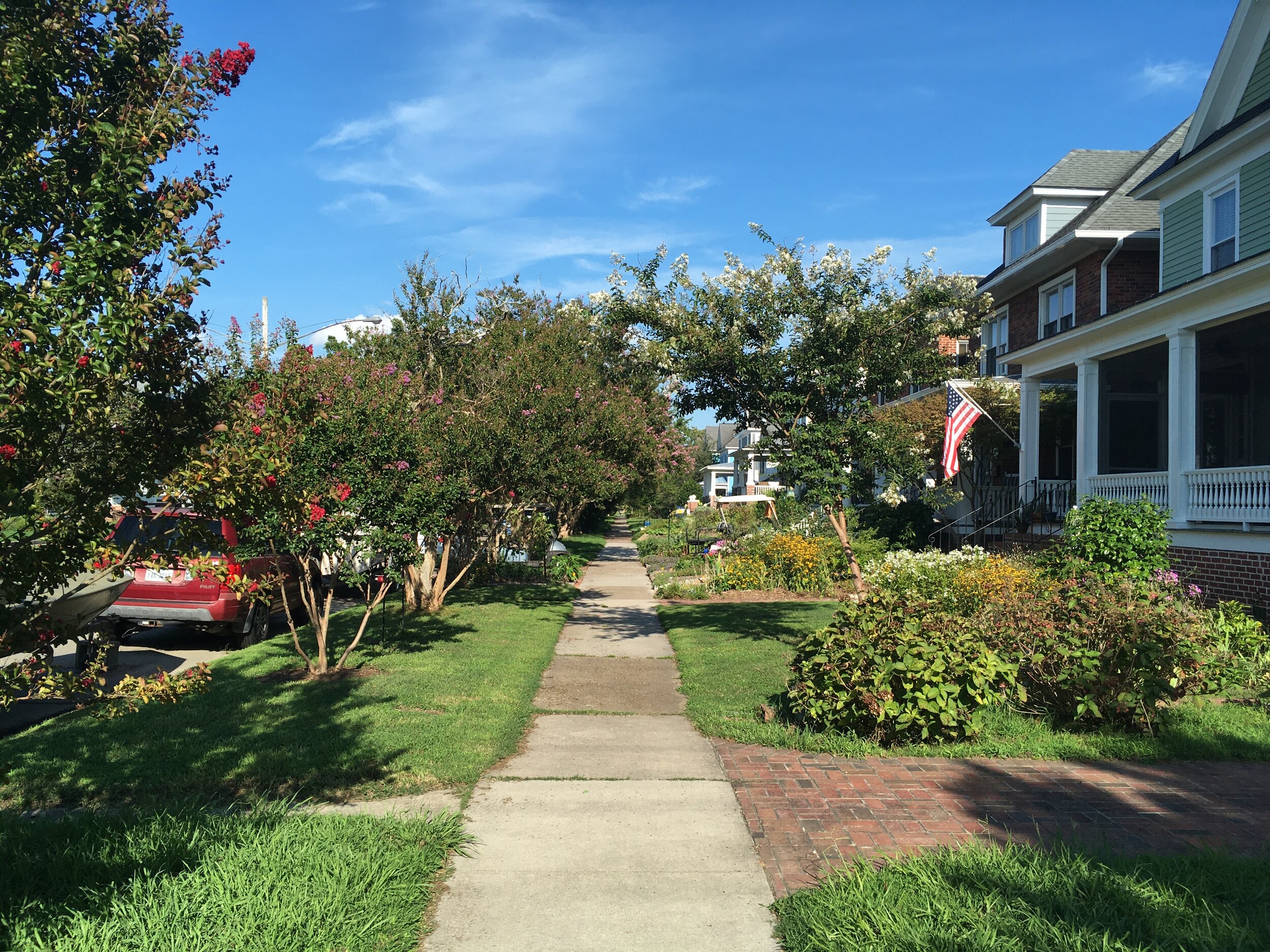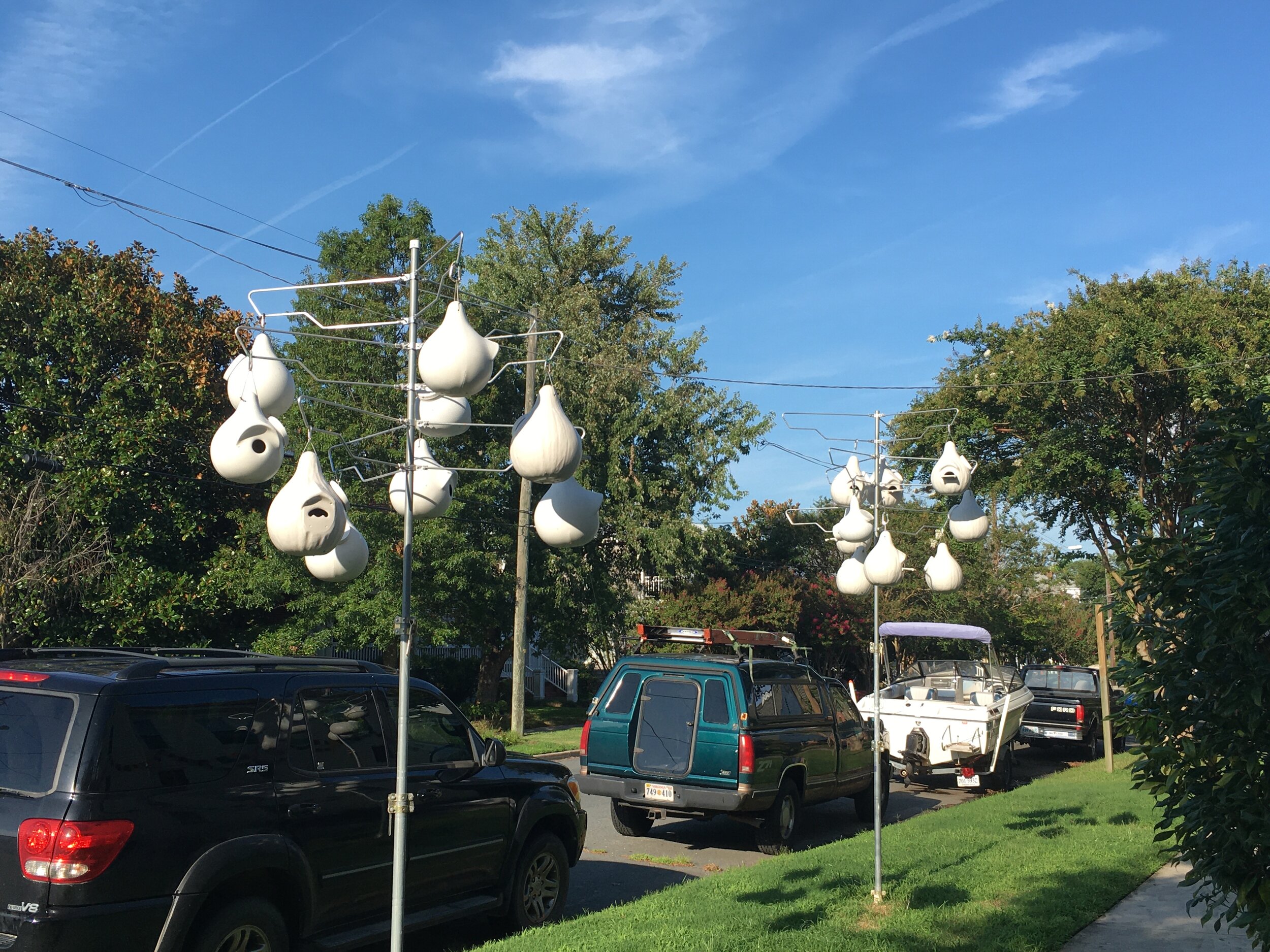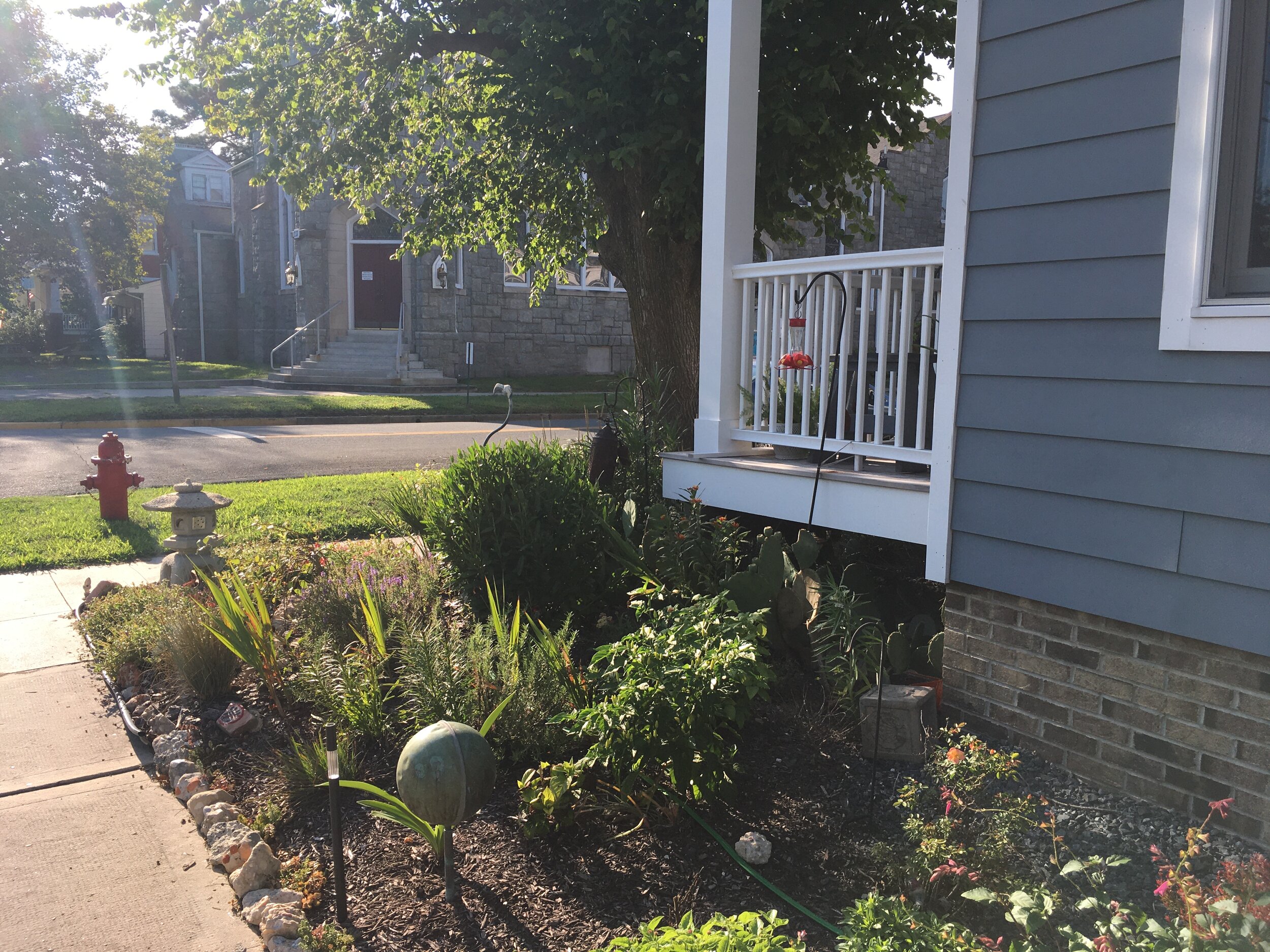As the largest incorporated town in Northampton County, in terms of both population and land area, Cape Charles is a welcoming destination to any visitors – including the many birders who make the trek out to what is perhaps the best birding county in the state. Cape Charles is located on a small peninsula on the western side of Northampton County with direct access to the Chesapeake Bay. It is only a few miles off US 13, and about 15 minutes’ drive time from the southern tip of the Delmarva Peninsula. In sparsely settled Northampton, it is a convenient collection of shops, restaurants, art galleries, a brewery, cidery, and distillery, as well as public beach access and other amenities. The town has undergone major revitalization since the 1990s, further increasing its prominence as a tourist destination. Fortunately for birders, boom time means that many of the businesses in town also remain open during the off-season, including in the fall and winter months that present some of the prime birding opportunities.
Cape Charles is perhaps less well-known as a birding destination in and of itself, and more as a stopover for birders visiting proximate sites including Kiptopeke State Park, Eastern Shore of Virginia National Wildlife Refuge, Magothy Bay Natural Area Preserve, Willis Wharf, and others. However, the town itself is not without excellent birding opportunities, particularly along the Bay. Eight eBird hotspots are included within the town limits, and while most of them refer to more specific locations, there is also a general hotspot for the town which can be used by birders who prefer not to break up their lists, or who do casual birding in town. The general town hotspot is typically used for birding around the historic downtown area, although the town boundaries proper encompass more area. Currently, the Town of Cape Charles covers 2,817 acres, though it is worth noting that 2,191 of these were added in 1992 when the Town annexed land to the south including the Bay Creek golf community. This area, located south of Mason Avenue and reached by driving over “The Hump” on Old Cape Charles Road, accounts for the majority of the town (including the Cape Charles Natural Area Preserve), but is so geographically discrete that it is not typically included on the general town eBird hotspot.
The main part of town presents a typical small vacation town feel. Neatly gridded streets are lined with rows of houses and vacation rentals, some of them historic and others more modern or recently restored. The wide variety of styles – sprawling Victorians often stand next to small shotgun houses, with everything in between represented – contributes to the town’s quaint character, and this is accentuated by the nice assortment of shops and businesses lining Mason Avenue (in effect, the “main street”). The streets are lined with trees, and many of the houses have very beautifully landscaped yards, which makes for a bucolic setting as well as a nice place to see birds. Walking the streets in town will, at all times of year, yield familiar suburban species including mockingbirds, robins, finches, cardinals, wrens, starlings, House Sparrows, and their compatriots. These are augmented during breeding season by the raucous chatter and aerial antics of both Purple Martins and Chimney Swifts, both of which begin returning by late March or early April. Many residents have martin houses, and it is possible to get some excellent views of these delightful birds! The prevalence of both feeders and ornamental plants also makes the town a haven for Ruby-throated Hummingbirds during the summer, while rarer species including Rufous, Allen’s, and Black-chinned have been attracted in fall and winter. Walking the streets in migration may also net some passerines, including warblers. Though sometimes neglected for more productive spots during rarity season, there is no reason to think the town couldn’t harbor a Townsend’s or Black-throated Gray Warbler some winter, or perhaps Virginia’s first Painted Redstart will be spotted here!
Apart from the general suburban birding to be had in town, a few specific areas merit a mention. On the western side of town there is a harbor, as well as public beach access and a wooden fishing pier. This waterfront area provides some of the better birding in town. During winter, scoping here is a good bet to see loons, Horned Grebes, all three scoters, Long-tailed Ducks, gannets, and gulls. Common Eider has been spotted here numerous times, occasionally even out of season. Off the fishing pier, there are rock jetties which often have Ruddy Turnstones and Purple Sandpipers, while the breakwaters further offshore typically have dozens of cormorants, including the occasional Great. Brown Pelicans are a common sight here, occasionally in winter, but far more numerously at other times of year. Migrating shorebirds such as Semipalmated Plover, Sanderling, and Least and Semipalmated Sandpipers sometimes forage on the beach, and American Oystercatchers are conspicuous during the summer. Spring brings return Laughing Gulls, as well as Common, Royal, and Least Terns. Later in the summer, look for Sandwich, Caspian, and perhaps an occasional Gull-billed. At any time of year, severe storms can drive birds into the harbor or force them to take shelter at the first available roost site. Storm roosts can sometimes form on the beach, on the vacant lot adjacent to the harbor, or nearby on the open ground by the large lake at Washington Avenue. This is a good way to find a Black Tern, and a Sooty Tern was recorded in the harbor during Tropical Storm Isaias (2020). Opposite Mason Avenue to the south, there is a former railyard that has now become a large, grassy field and which sometimes attracts open country species, including Upland Sandpiper on occasion.
The aforementioned pond along Washington Avenue is another worthwhile birding spot, as are the ponds along Bahama Drive. All of these locations are fenced in as part of a gated resort community, but while they are not open to vehicle traffic, they are accessible on foot. The Washington Avenue pond, which has its own hotspot, is also easily birdable from behind the fence. In winter, these ponds can be good for a variety of ducks including Ring-necked, both scaup, Redhead, Ruddy Duck, Bufflehead, American Wigeon, and more. In late spring and late summer, waders sometimes forage along the edges, most commonly Snowy and Great Egrets, but Little Blue Heron and Cattle Egret are also possible. There are also sometimes large goose flocks in winter, both on the lake and foraging in the adjacent open lots, and these have had Snow, Greater White-fronted, and Cackling Geese.
Proceeding north on Fig Street takes you to the Kings Creek Resort area, which includes a marina and sheltered cove, as well as vocational rentals and a restaurant. The area around the marina is another place to see gulls, terns, pelicans, herons and egrets, and waterfowl. On Fig Street prior to the marina, there is a tidal cove that sometimes has decent exposed mudflats. In the right season, these may have shorebirds including yellowlegs, Semipalmated Plovers, and an assortment of peeps.
A final spot to mention is the Cape Charles Central Park, unsurprisingly located in the center of town. It occupies roughly two blocks of mostly open space, ringed by a paved walking path. Mostly recreational, this park is favored by dog walkers, joggers, sports players, and other recreationists. It is mostly open lawn, with scattered shade trees and more substantial foliage, including a trellis covered in Confederate jasmine, at the east end. The view of the open sky is useful to scan for swallows, swifts, flyover gulls and terns from the nearby Bay, and migrating raptors in fall. On an August day, it wouldn’t be a bad place to spot a Mississippi or Swallow-tailed Kite. Shallow depressions along the north and south edges of the park often fill with water after a heavy rain, and can attract shorebirds including Solitary Sandpiper, both yellowlegs, or sometimes peeps. Passerine migrants are possible here, but the sparse foliage makes it a less-desirable site. There is a large flock of House Sparrows that frequents the jasmine trellises, and in May 2020 they were joined by a singing male Dickcissel who lingered for over a week.
Town Website: Cape Charles
eBird Hotspot: Cape Charles (town)
—Matt Anthony, August 2020

